Click here to print
Notes on archiving, collecting, and whatnot
posted April 13, 2014
 Among all the things anyone thinks to preserve, catalog, and exhibit, what would be the last?
Among all the things anyone thinks to preserve, catalog, and exhibit, what would be the last?
Not visual art, art objects, or objects of affection – mementos of summer vacations by the sea, say.
Not sound recordings, clearly. Not, even, foods of earlier times – recreating those has been faddish for some time.
The least likely to be collected, surely, would be smells. What did this or that place smell like, at a particular time, or at another?
Such questions might seem imponderable, but as the field of sensory history gains more devotees in academic research, some have begun to make a study of the history of smell, and have developed some canny methods for determining what odors would likely have predominated in various locations at various times.
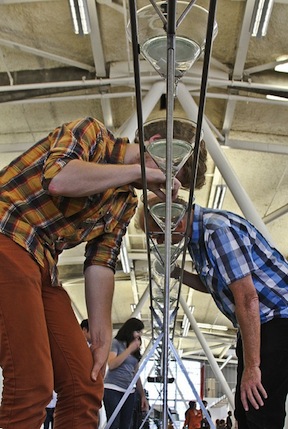 An exhibition of historic smells — Urban Olfactory: What does history smell like? — is on the nose at SPUR, a San Francisco urban-improvement nonprofit, until the end of April 2014.
An exhibition of historic smells — Urban Olfactory: What does history smell like? — is on the nose at SPUR, a San Francisco urban-improvement nonprofit, until the end of April 2014.
There, visitors can take a whiff from quickly unstoppered and restoppered vitrines at 18 researched and complex odors. So, for example, there’s the sweet fug that King Louis XIV of France and Navarre favored in his palace at Versailles and created from pine and cedar.
Louis reigned from the age of 7, in 1643, until his death in 1715, and his chosen odor was rather preferable to what central Paris smelled like two decades later, as Urban Olfactory illustrates with a concoction described as “foul breath, human body stink, & overflowing gutters.”
Also exhibited is the smell of manure in the French countryside which mingles “notions of nostalgia and revulsion” — for which, read: rankly rancid cow poo.
The vitrine redolent of modern-day Rotterdam mingles “river water, patchouli, hashish, tangerine, algae, fur, and dog,” a set of descriptors that no wine critic would ever likely voice.
Two cultural, architectural, urban-design historians at California College of the Arts, David Gissen and Irene Cheng, each of whom has a history of thought-provoking exhibitions and projects, wanted to convey the smell of cities through the ages.
So they pored over various historic records, consulted with some prominent living perfumers, and chemically recreated a series of smells.
To exhibit their chemical concoctions, they placed their mixtures in lidded vitrines that enable exhibition visitors to catch a potent whiff of the aforementioned, as well as spice-heavy air over the Strait of Bosphorus of the Middle Ages, the New Jersey Turnpike during a rainstorm, air-pollution in modern-day San Francisco, and much more.
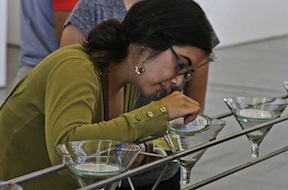 The two scholars note that olfactory history has received some attention during the last decade, following in the echoes of the history of sound, and before that culinary history. Interest in olfactory environments has occurred among historians, preservationists, architects, and artists. That research has been put to such uses as recording, representing, and reconstructing historical buildings, interiors, and cities.
The two scholars note that olfactory history has received some attention during the last decade, following in the echoes of the history of sound, and before that culinary history. Interest in olfactory environments has occurred among historians, preservationists, architects, and artists. That research has been put to such uses as recording, representing, and reconstructing historical buildings, interiors, and cities.
In October 2013, Gissen and Cheng curated an exhibition at California College of the Arts of olfactory projects by other researcher/artists, called An Olfactory Archive: 1738-1969. Their program noted that a “surprising number of historians, preservationists, architects, and artists experimented with scents to record, represent, and reconstruct buildings, interiors, and agrarian and urban landscapes,” and that it ranged from Aaron Betsky and Herzog and DeMeuron’s fragrance Rotterdam – Olfactory Object (2004) to Christophe Laudemiel’s recent efforts to reconstruct the scents of the Straight of Bosphorus in the Middle Ages (2013). That olfactory research and recreation came close after other studies of the history of the senses, particularly sound but also touch.
There’s a handy aggregation of smell-exhibit sites online, and also an interview with Victoria Henshaw, a British historian of smell. In fact, smell is all over the place, these days.
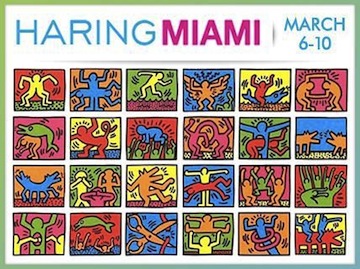
A poster for the Haring Miami exhibition
A stink of another kind blew in last month (February 2014) from New York where nine art collectors have sued the Keith Haring Foundation, saying it improperly declared that 90 paintings they exhibited in Miami in 2013 were “fakes” or “counterfeit.” The dealers claim in U.S. District Court in Manhattan that they lost $40-million because the Foundation used “malicious and wrongful tactics” to shield its deliberations over authenticity of works attributed to Keith Haring, who died in 1990.
In 2013, the Foundation sued the organizers of “Haring Miami,” an exhibition of claimed Haring works, saying the organizers were defrauding the public by presenting 200 works as by Haring when only a handful were. That, the Foundation claimed in its filing, would “irreparably destroy the value of the authentic art and the reputation of the artists and the artwork.”
The nine organizers now claim that the Foundation has attempted to keep newly discovered Haring works out of the market so as to inflate the value of paintings that the Foundation had already authenticated. The dealers claim that they had bought numerous pieces from two of Haring’s friends, including a former lover.
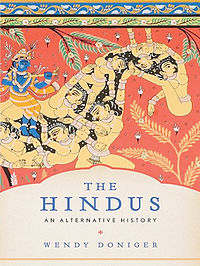 Also on the nose have been the actions of Penguin Books India, a subsidiary of Penguin Random House, in response to objections to one of its books, The Hindus: An Alternative History, a 2008 book of 800 pages by Wendy Doniger, a highly regarded scholar of religion at the University of Chicago. Penguin India published Doniger’s grand history in 2009. The next year, Dina Nath Batra, the convenor of a Hindu group, Shiksha Bachao Andolan Samiti (“Movement to Save Education”) objected in a legal filing by claiming the group was defending “the sentiments of Hindus all over the world” that had been affronted by the publication of a “shallow, distorted, and non-serious presentation of Hinduism … written with a Christian Missionary Zeal and hidden agenda to denigrate Hindus and show their religion in a poor light.”
Also on the nose have been the actions of Penguin Books India, a subsidiary of Penguin Random House, in response to objections to one of its books, The Hindus: An Alternative History, a 2008 book of 800 pages by Wendy Doniger, a highly regarded scholar of religion at the University of Chicago. Penguin India published Doniger’s grand history in 2009. The next year, Dina Nath Batra, the convenor of a Hindu group, Shiksha Bachao Andolan Samiti (“Movement to Save Education”) objected in a legal filing by claiming the group was defending “the sentiments of Hindus all over the world” that had been affronted by the publication of a “shallow, distorted, and non-serious presentation of Hinduism … written with a Christian Missionary Zeal and hidden agenda to denigrate Hindus and show their religion in a poor light.”
In a civil suit and multiple criminal complaints against Doniger and the publisher, the group went further, and claimed to have detected a cultural conspiracy, not just a careless slight: “The intent is clearly to ridicule, humiliate, and defame the Hindus and denigrate the Hindu traditions.” In response to Doniger’s suggestion that Sanskrit texts of Hinduism had been written “at a time of glorious sexual openness and insight,” the plaintiffs charged that Doniger’s “approach is of a woman hungry of sex.”
In February 2014 Penguin has agreed to stop selling the book in India, and pulp its remaining inventory. The settlement also required Penguin India to affirm “that it respects all religions worldwide.” In return, the plaintiffs agreed to drop suits against Doniger.
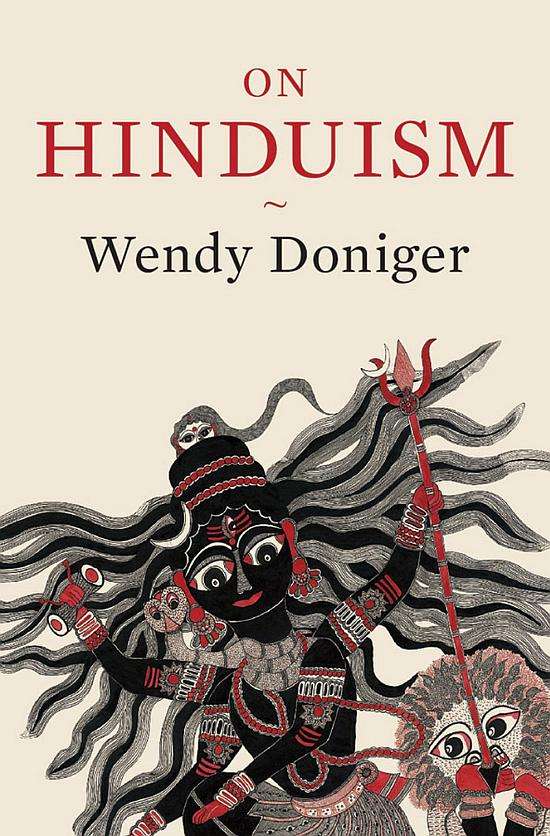 Doniger and various of her colleagues have been subjected to campaigns by radical Hindu groups for a decade or more. Doniger was the target in 2010 of a “Sarasvati Research Trust” which submitted a petition to Penguin USA demanding it withdraw Doniger’s book on the grounds that it was “rife with numerous errors in its historical facts and Sanskrit translations.” The petition argued that “these errors and misrepresentations are bound and perhaps intended to mislead students of Indian and Hindu history.
Doniger and various of her colleagues have been subjected to campaigns by radical Hindu groups for a decade or more. Doniger was the target in 2010 of a “Sarasvati Research Trust” which submitted a petition to Penguin USA demanding it withdraw Doniger’s book on the grounds that it was “rife with numerous errors in its historical facts and Sanskrit translations.” The petition argued that “these errors and misrepresentations are bound and perhaps intended to mislead students of Indian and Hindu history.
Doniger noted in press comments that the fault was not with Penguin India, which had been subjected to coercion by lawsuits, a tactic increasingly used by fundamentalists but that ironically summons up colonial era laws that arguably remain in force only due to a lack of legislative attentiveness when it has come to removing them from the books. But Doniger warned that the episode boded ill for free speech in the country. The same group that forced the withdrawal of The Hindus: An Alternative History demanded on March 1 that the publisher of Doniger’s 2013 book On Hinduism stop sales and pulp all remaining copies of that book, too — they allege it is “malicious and offending.”
And they got their way. An Aleph Book Company official told Times of India: “We don’t want to get involved in any controversy.”
Lawrence Liang of the Bangalore-based Alternative Law Forum had brought an action against Penguin India over its withdrawal of The Hindus, and said to Times of India that Aleph’s ” absolutely shameful and ridiculous” action signaled that “if you want a publisher to withdraw a book, all you have to do is file a police complaint. Reading has no future in this country,”
T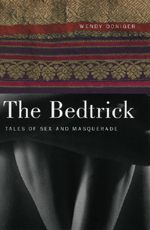 he Hindus: An Alternative History meanwhile remains on sale outside India, and in library circulation, and is apparently even downloadable in India on Kindle readers. Since its publication, it has been greeted in India by thoughtful reviews that have disagreed respectfully with her on various issues, some critical but still measured responses, and plenty of denunciation by aggrieved devotees, as well. Unsurprisingly, book banning has been decried both within India and internationally.
he Hindus: An Alternative History meanwhile remains on sale outside India, and in library circulation, and is apparently even downloadable in India on Kindle readers. Since its publication, it has been greeted in India by thoughtful reviews that have disagreed respectfully with her on various issues, some critical but still measured responses, and plenty of denunciation by aggrieved devotees, as well. Unsurprisingly, book banning has been decried both within India and internationally.
Clearly in doubt, now, is Aleph’s 2014 catalog announcement that it will issue this summer an Indian edition of Doniger’s The Bedtrick: Tales of Sex and Masquerade, which the University of Chicago Press published in the United States in 2000. Before caving in to the demand that it pull On Hinduism, Aleph had told Outlook India, an excellent source for reasoned analysis of the disputes, that it would have no comment on those plans, until later. That “later” apparently has come in the form of joining Penguin’s fearful flight.
Remember the US “culture wars” of not long ago?
But perhaps the smelliest arts-related news of the year, to date, wafts from Australia where the attorney general and arts minister of the recently installed conservative (Liberal/National Party coalition) government has floated the notion of a loyalty oath as a condition of accepting government arts funding.

The Manus Island refugee detention centre on a northern island of Papua New Guinea, from an Australian Department of Immigration and Border Security. Not as rosy as those secretly shot by island residents living near the detention camp (click photo to view).
Sound implausible? In February 2014, 28 artists due to take part in the 19th Sydney Biennale published an open letter threatening to boycott the event because its major corporate sponsor, Transfield Holdings, operates a company, Transfield Services, that manages the highly controversial and increasingly secretive Australian immigration detention centre in Nauru – yes, the Nauru in the middle of the Pacific whose dominating ring of rock stripped of its tons and tons of guano is rapidly heading towards becoming a submerged archaeological site.
Transfield in late February 2014 won a billion-dollar contract to add to its portfolio management of the Manus Island detention centre, in Papua New Guinea, a site of increasing unrest from detained refugees – “boat people” – whom the federal government insistently confounds with “people smugglers” who must be stopped by any means, which have extended to turning back boats, pressing Indonesia to stop them before they approach Australian waters, muscling New Guinea to take the fleeing migrants, most of whom are Afghans, and now trying to persuade Cambodia to take them – as some bizarre kind of post-genocide economic investment, but secretly, in denial of revelations by Cambodian government officials.
Tensions have been intense at Manus Island since February when one Iranian asylum-seeker, Reza Berati, was killed, and allegations were made that two Australian security contractors were responsible. Federal authorities have declined to reveal any details, preferring to distribute anodyne stock photographs, but a more faithful picture of what happened there is emerging.
Against this background of events, the 28 artists who withdrew from the Biennale wrote: “We will not accept the mandatory detention of asylum seekers, because it is ethically indefensible and in breach of human rights; and … as a network of artists, arts workers and a leading cultural organisation, we do not want to be associated with these practices.” More than a dozen additional artists soon became signatories, too.
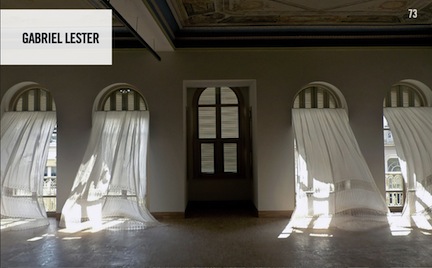
Image from a guide to the Sydney Biennale for secondary-school students. It depicts “Melancholia in Arcadia.” a 2011 work by Dutch artist Gabriel Lester, who uses cinematic
techniques and theatrical illusion to weave sound, video, performance, and installation to create atmospheric, mysterious spaces. [Click image to see whole guide.]
Sydney Festival director Lieven Bertels responded to the Sydney Morning Herald that artists were entitled to “decide if they will accept someone’s money.” He added: “The Arts Minister should remind himself of the freedom that political parties keep for themselves to refuse donors based on moral principles.”
Not all arts administrators agree. Some said they fear the Biennale’s action would make corporate sponsors “wary” when considering backing events in Australia, while some claimed artists have no place taking a stand, at all.
Arts entrepreneur Leo Schofield, who is director of the Hobart Baroque Festival, asserted that the minstrel-in-the-gallery, cocktail-bar-background-piano model is not only a delusion of elected officials. He said: “How arts organisations find the money to pay for events is not the artist’s business. This is a gross example of people exhibiting self-importance that they haven’t earned.”
Printed from Moving Image Archive News: https://www.movingimagearchivenews.org
URL to article: https://www.movingimagearchivenews.org/notes-on-archiving-collecting-and-whatnot/
Click here to print